Darth Bane was a legendary human male Dark Lord of the Sith and the sole survivor of the destruction of the Brotherhood of Darkness at the hands of the Jedi Order during the Jedi-Sith War a thousand years before the Clone Wars. As the only surviving Sith, Bane recognized that Sith infighting had weakened them to the point that the Jedi could destroy them. To rectify this, Bane reformed the Sith and created the Rule of Two, mandating that there could be only two Sith—a Master and an apprentice—at any given time. These new Sith would begin a plot to destroy the Jedi and conquer the galaxy in secret. With Bane's defeat at the hands of his apprentice, Darth Zannah, allegedly on the Inner Rim planet of Ambria, the Jedi wrongly believed that the Sith were defeated with him, as the galaxy entered a millennium-long era of peace.
The vendetta Bane held against the Jedi was fulfilled during the Clone Wars when Supreme Chancellor Sheev Palpatine, secretly the Sith Lord Darth Sidious and a follower of the Rule of Two, transformed the Galactic Republic into the Galactic Empire in 19 BBY and destroyed the Jedi Order. However, the victory was short-lived, as the redeemed Jedi Knight Anakin Skywalker, formerly the Sith Lord Darth Vader, defeated the Sith twenty-three years later, and the order was finally destroyed upon Sidious's final death in 35 ABY.
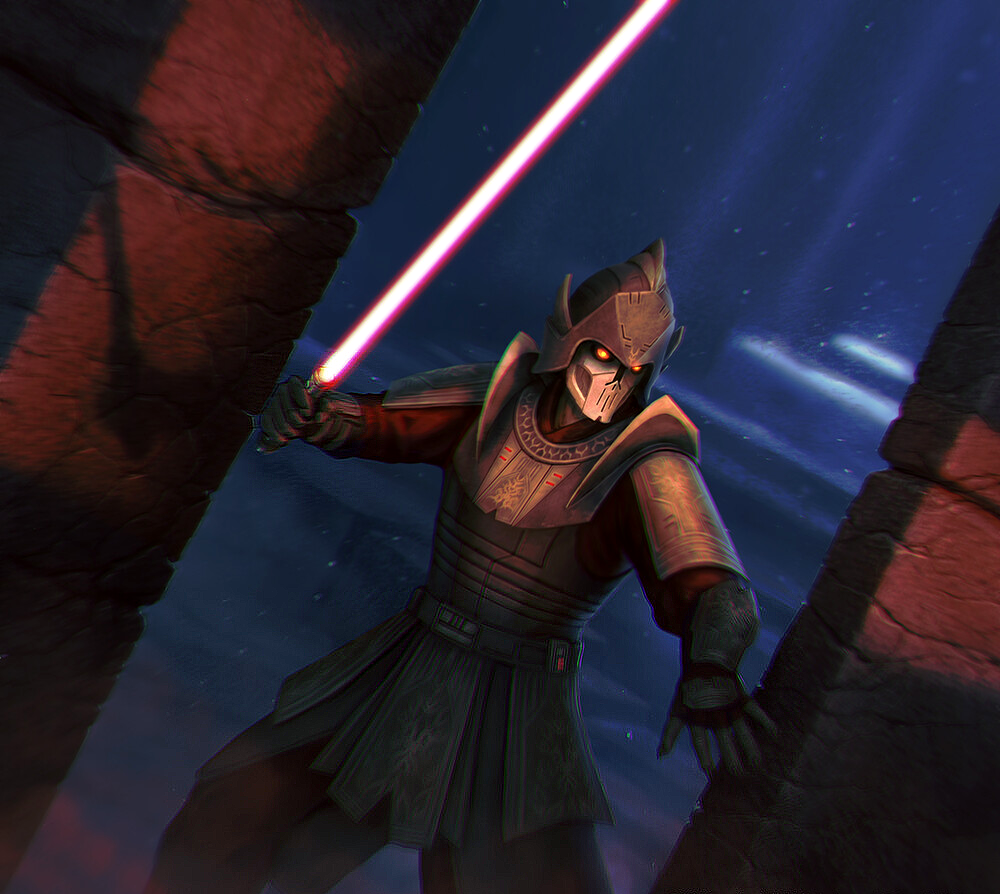
Darth Bane was an ancient Sith Lord from the time of the Old Republic.
Hailing from Moraband, the ancient homeworld of the Sith, Darth Bane was a legendary Dark Lord of the Sith who lived during the dark age of the Old Republic, a thousand years before the Clone Wars. The Sith Order in his time was nearly equal in number with the Jedi Order; at the height of their power, the Sith's dominion had spread across the galaxy. However, the Sith were often fueled by their own individual lusts for power, with squabbling Sith turning against their own.
While serving in the Sith Empire, known as the Brotherhood of Darkness, Bane realized that infighting and greed from other dark side warriors created a weakness. The infighting eventually led to the defeat of their order at the Mid Rim planet Ruusan in 1032 BBY, as the Jedi were able to all but destroy the weakened Sith. Bane was the sole survivor of the Jedi-Sith War, as he organized the eradication of all the other Sith.
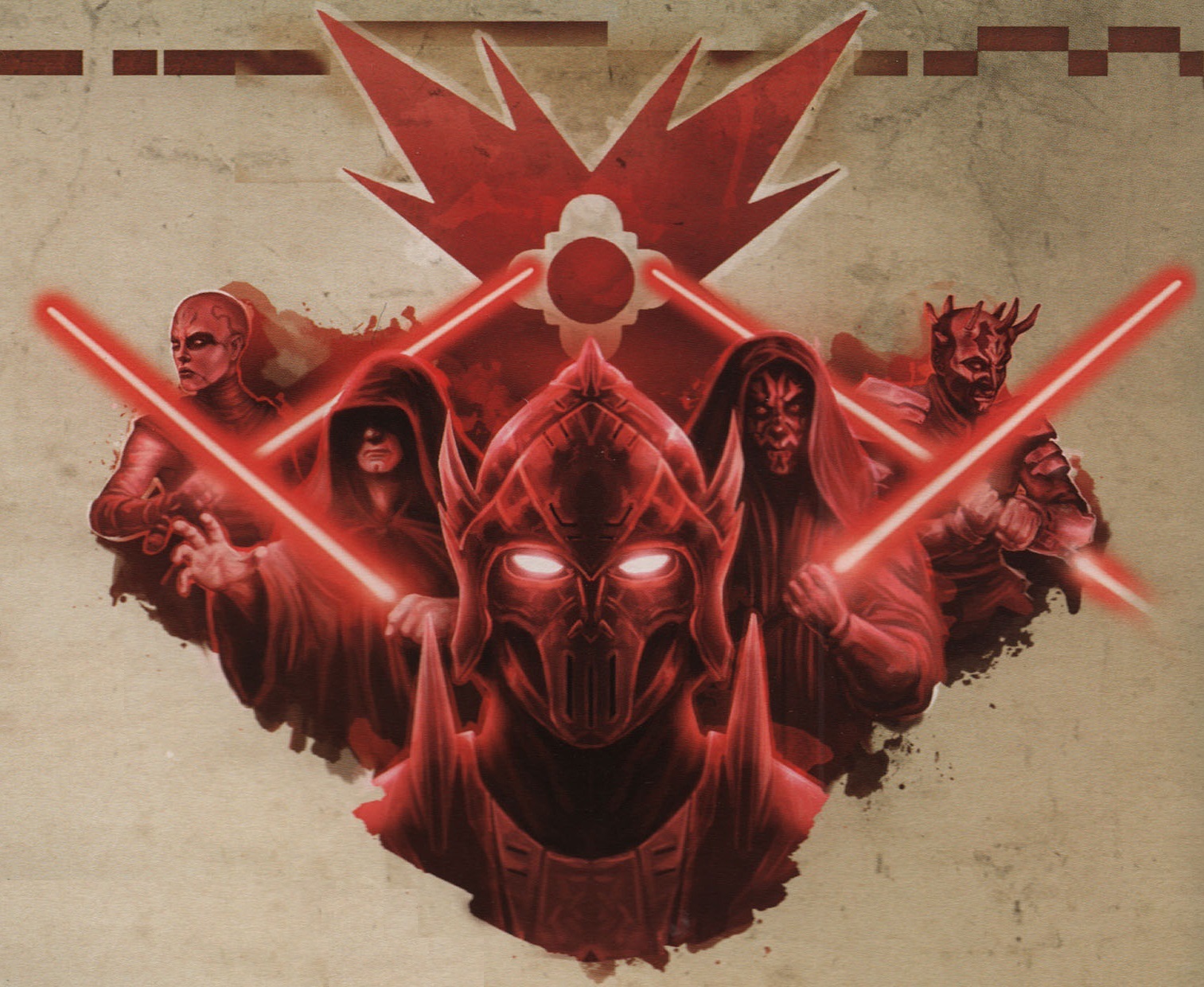
Bane's Rule of Two had ensured the rebirth of the Sith Order.
Recognizing that the old Sith traditions were a dead end, Bane created a new Sith philosophy that succeeded the older doctrine of the dyad in the Force, a rare and powerful Force-bond that existed between two individuals. Instead of building a new army of Sith Lords, Bane's Rule of Two mandated that there could be only two Sith at a given time: a Sith Master to embody power and a Sith apprentice to crave it. Only by slaying their master could the Sith apprentice gain that title and take on their own apprentice, or they could die in the attempt, proving themselves unworthy of the Sith legacy, and be replaced. Those Sith would favor the shady tactics of trickery and scheming to destroy their enemies rather than outright force.
The goal of Bane's decree, and the new hierarchy that it created, was to ensure the survival of the Sith Order. The Rule of Two recognized the ambition for power inherent in Sith philosophy and utilized it as a mechanism of succession from one Sith Master to the next. The Rule of Two therefore encouraged Sith apprentices to take the power that they had been trained to covet by supplanting their masters, who were obliged to anticipate signs of betrayal while educating their apprentices through agonizing lessons.
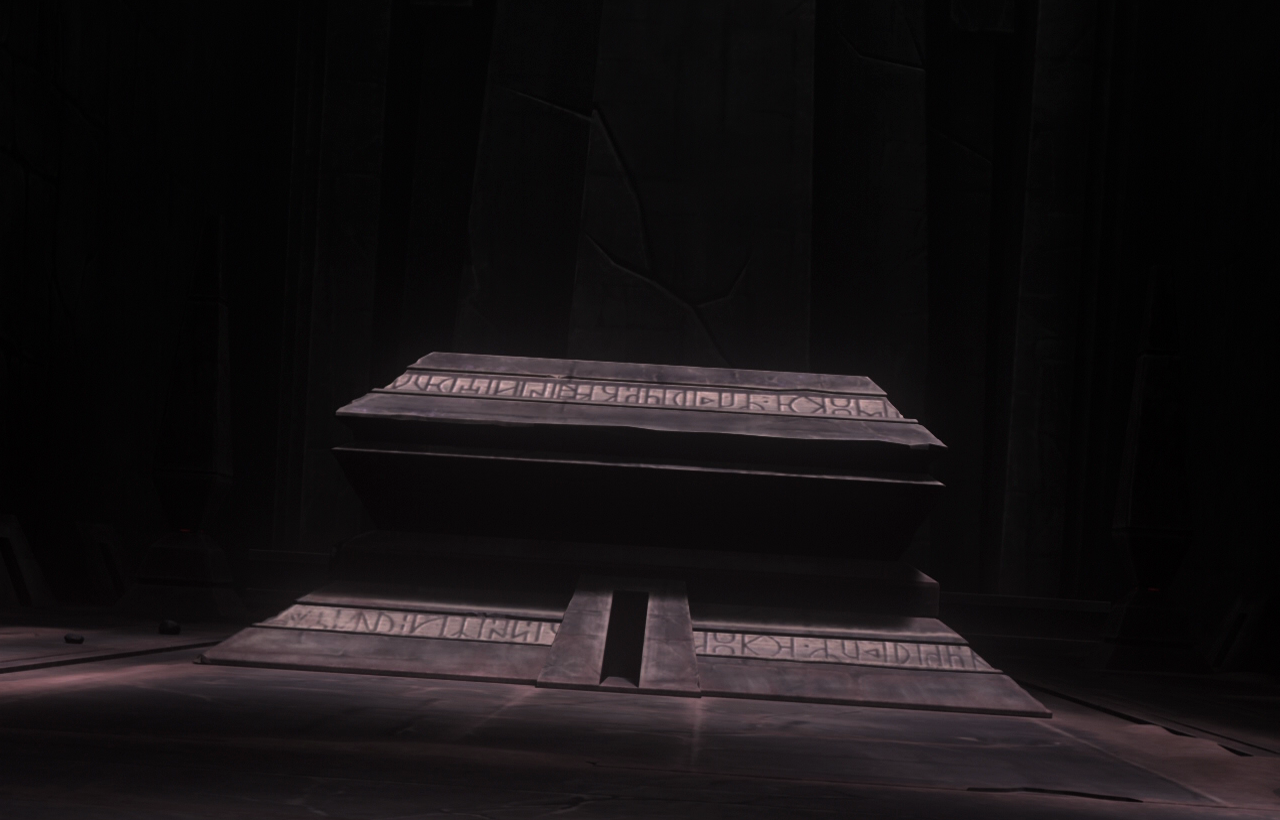
Darth Bane's sarcophagus on the Sith homeworld of Moraband,
The Rule of Two's establishment coincided with the creation of a plot, known as the Grand Plan, for the Sith to corrupt the Galactic Republic from within, diminish and disgrace the Jedi Order, and eventually rise and conquer the galaxy; the Sith would soften up their enemies before zeroing them in for total subjugation. Believing that the new principle would prevent the power of the dark side from destroying the Sith Order, Bane took on an apprentice of his own, Darth Zannah, and began passing on his knowledge. The Jedi learned of Bane's new philosophy and falsely believed that they had destroyed the Sith forever with Bane's defeat, which marked the dawn of a long-lasting era of peace under the rule of a reformed Galactic Republic. However, Bane's plans continued through his apprentice, who slew the Sith Master in order to claim his place. Although historical records were not accurate about the identity of Bane's apprentice or how Bane died, it was rumored that Bane was killed by Zannah in a duel—a pattern that nearly all Sith repeated afterward—which took place on the Inner Rim planet of Ambria.
After Bane's death, his remains were placed in a sarcophagus adorned with runic inscriptions in the ur-Kittât language in the Valley of the Dark Lords on Moraband, which was said to be haunted by a fiery spectral image of the late Dark Lord. Additionally, a colossal statue of Bane in his armor was erected at the far end of his massive burial chamber. Bane was the last Sith Lord to be buried on Moraband.
One of the most infamous of the Sith Lords, Darth Bane was considered the founder of the modern Sith, who continued their quest for revenge, working in secret as they plotted their return to galactic dominance. Those plans continued through Darth Sidious, publicly known as Supreme Chancellor Sheev Palpatine, who engineered the Clone Wars to gain more power over the Galactic Republic. He also manipulated the war—fought between the Republic and the Separatist Alliance—to make the Jedi compromise their ideals, as they served as leaders in the Grand Army of the Republic. Doing so would allow him to justify his eventual destruction of the Jedi Order. Sidious also had a personal protocol droid named 11-4D that he inherited from his Sith Master, Darth Plagueis, and the droid's memory bank retained information on the former strongholds of the ancient Sith Lords, such as Darth Bane's tomb on Moraband.
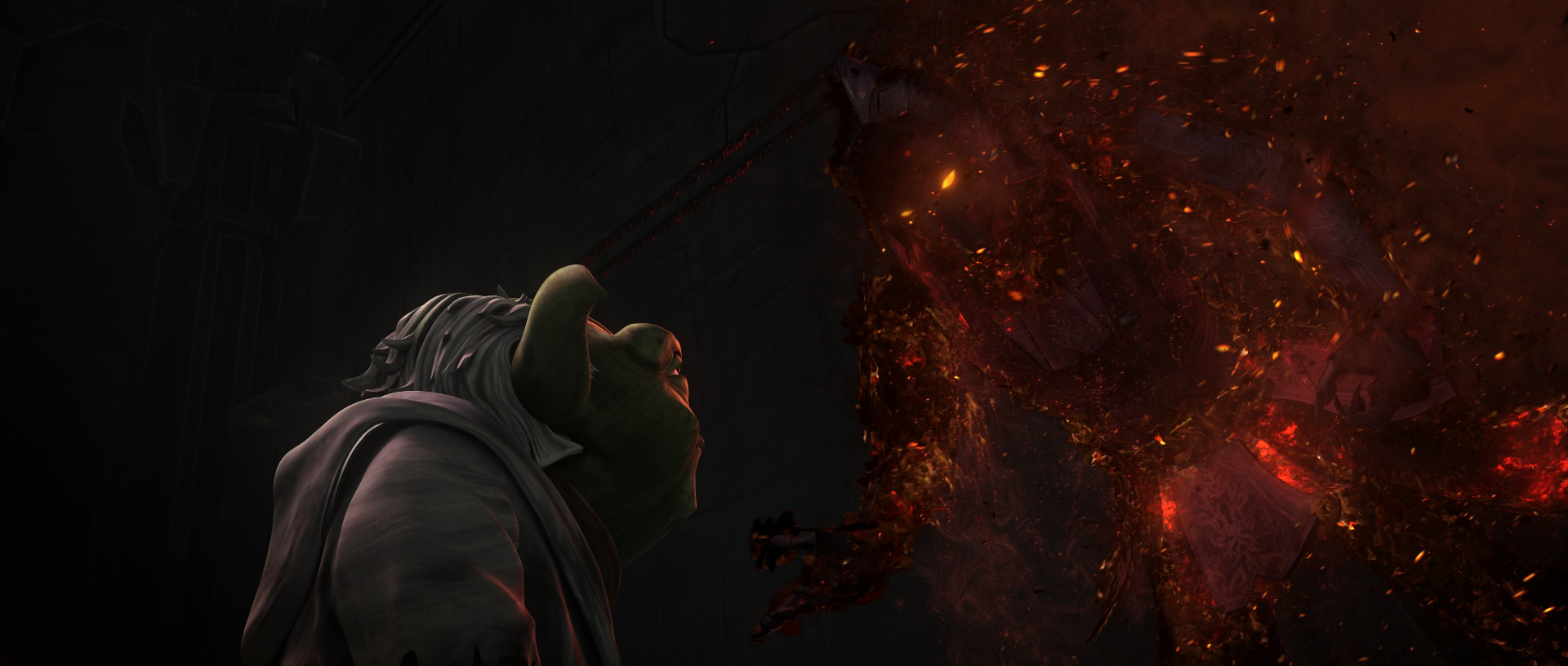
Grand Master Yoda encountered the specter of Darth Bane during the Clone Wars.
During the war, in 19 BBY, Jedi Grand Master Yoda ventured to Moraband on a journey to discover the secrets of immortality. He entered Bane's tomb and encountered a fiery vision of the ancient Dark Lord. As part of Yoda's trial to learn the power of immortality, the apparition attempted to convince the Jedi Master to turn to the dark side. Yoda refused, remarking that Bane was dead and that what appeared before him was simply an illusion that had nothing to offer. Yoda's defiance banished the screaming specter back into the sarcophagus, while Yoda continued on his journey. The Jedi Master's travel to Moraband was eventually mentioned in a set of hand-drawn maps that were believed to be created by the Ithorian artist Gammit Chond, along with an illustration of Darth Bane's fiery specter. The maps were later restored and collected in the Graf Archive on the moon Orchis 2 at some point no earlier than 34 ABY.
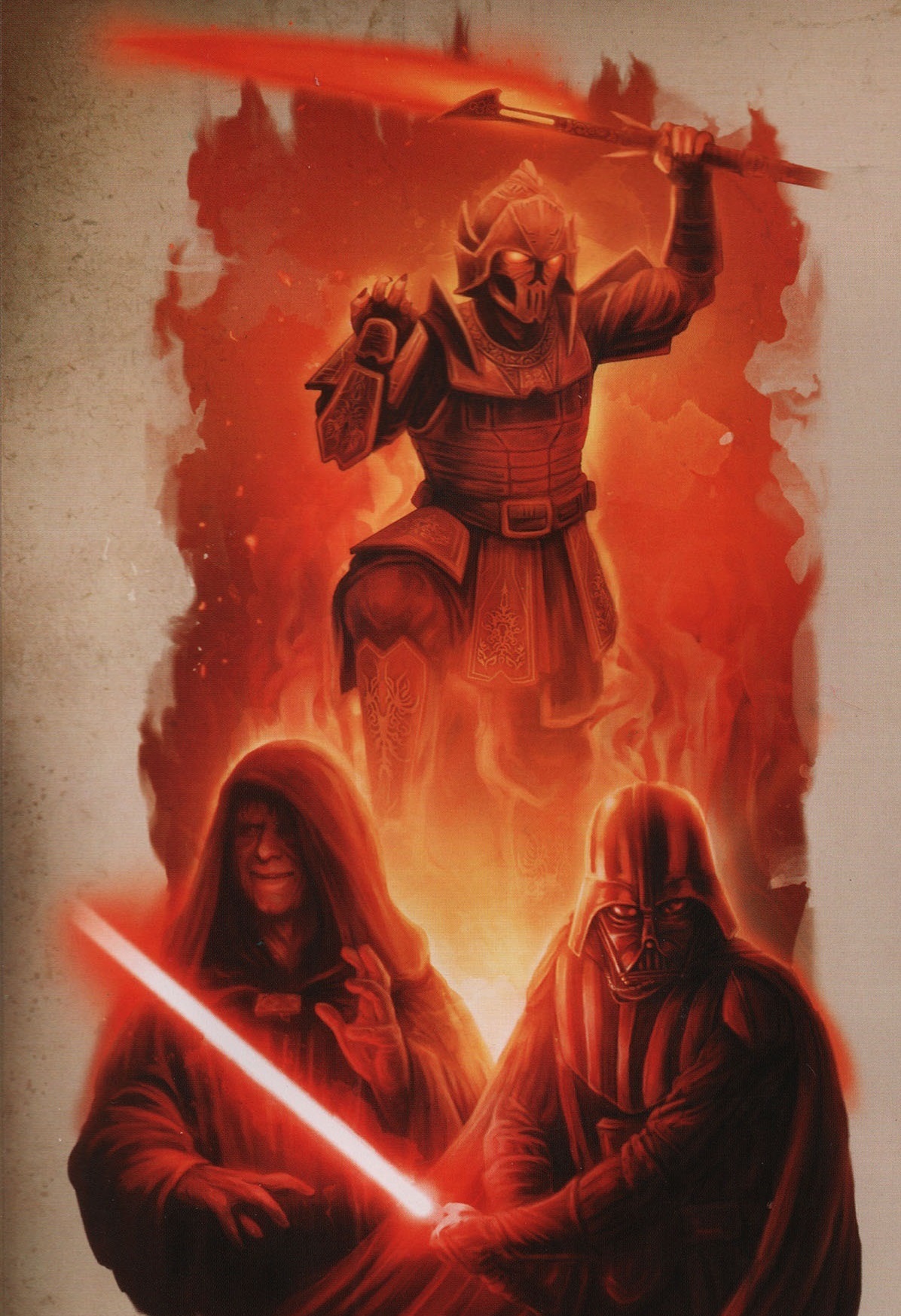
Darth Sidious and Darth Vader were the last Sith Lords who followed Bane's Rule of Two.
The war's end in 19 BBY, a thousand years after Bane's death, saw the culmination of the Sith's millennium-long vendetta against the Jedi. Sidious declared himself Emperor and reformed the Republic into the Galactic Empire. To destroy the Jedi, he issued Order 66, a command implanted in the clone troopers of the Grand Army of the Republic to execute the Jedi as traitors. In addition, Sidious seduced to the dark side Jedi Knight Anakin Skywalker, believed by the Jedi to be the Chosen One of prophecy who would bring balance to the Force and destroy the Sith. Skywalker adopted the Sith mantle of Darth Vader, and the Grand Plan that Darth Bane had put in motion a thousand years ago had thus been fulfilled by Sidious, who was recognized thenceforth as the greatest Sith Lord after Bane.
Between 3–4 ABY, Luke Skywalker, a Jedi trainee and Vader's distant son, traveled to the planet Gazian in hopes of learning more in the ways of the Jedi. When he reached a vergence in the Force known as the Living Sea, Skywalker encountered a duplicate consciousness of a Jedi of the High Republic Era—an imprint of Jedi Master Elzar Mann's mind. Witnessing the Republic and the Jedi Order at their zenith, Mann described the Jedi in his time as living their golden age, approximately eight hundred years after they ended the rule of Darth Bane. Skywalker, who was already concerned about his lack of knowledge about the Force and the Jedi, interrupted Mann after the latter mentioned Bane, and complained about his struggle to move forward in his life without proper guidance.
Despite achieving their goal of galactic conquest, the Sith victory proved short-lived as the Emperor's reign ended within a generation after his rise to power. During the Battle of Endor in 4 ABY, Vader sacrificed his life to save his son, Luke, killing the Emperor and dying as the last Sith Lord in the lineage of Darth Bane. The destiny of the Chosen One was fulfilled, and Anakin Skywalker became one with the Force. With the Sith rule at an end, understanding Bane's tactics and rationale was seen as crucial for the Jedi to rebuild their order, and to prevent the Sith's rise to power once again.
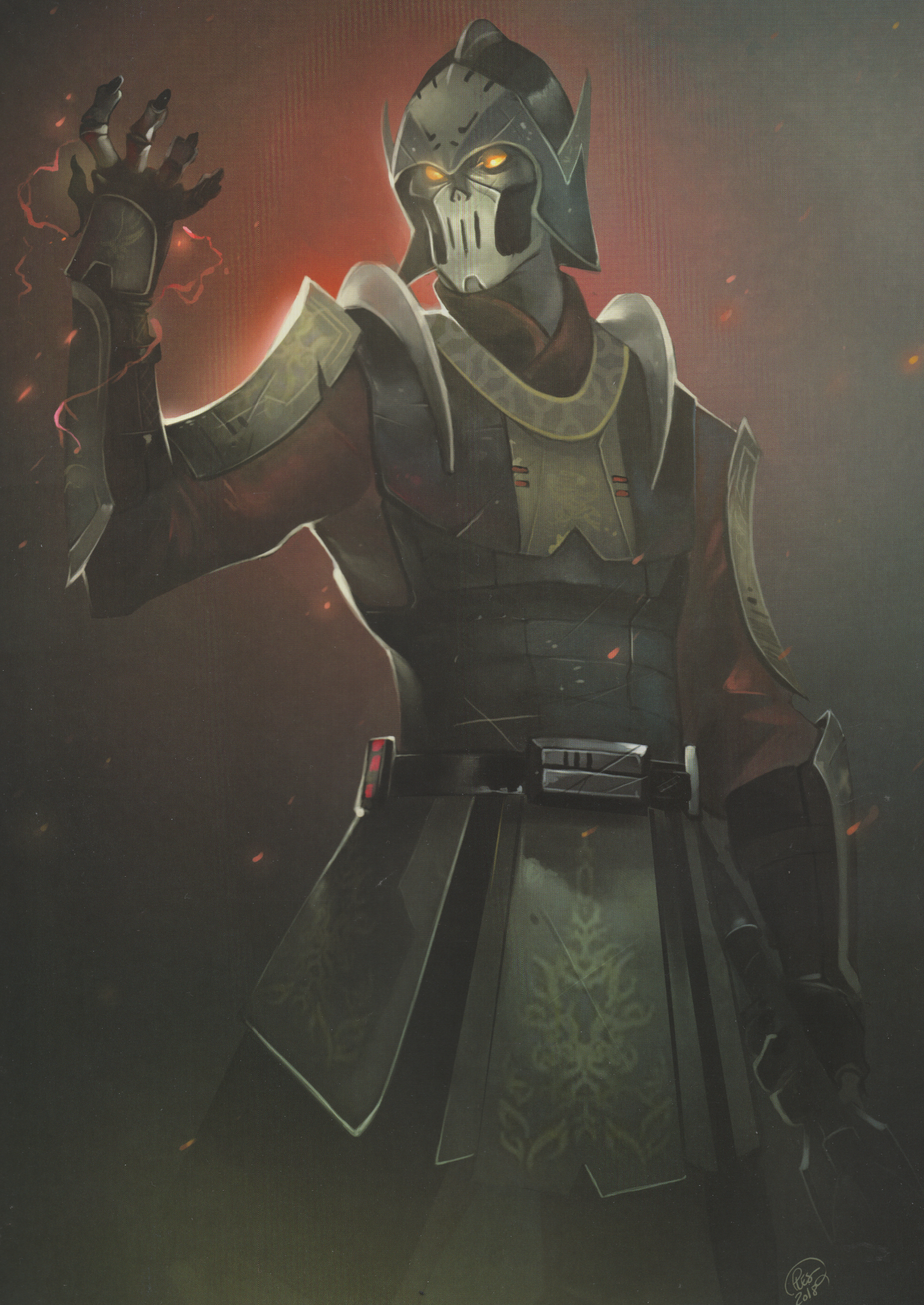
Darth Bane's legacy endured for a millennium.
Unbeknownst to the galaxy, however, Sidious was resurrected by transferring his essence through the Force to an imperfect cloned body. He secretly created a Force-sensitive genetic strandcast that came to be known as Supreme Leader Snoke to rule the First Order, a military regime succeeding Sidious's Empire, as proxy. Sometime later, Luke Skywalker, the last Jedi in existence, included a mention of Bane and the Rule of Two in a book in which he chronicled the history of the Jedi Order, titled The Secrets of the Jedi. Sidious likewise mentioned Bane while chronicling Sith history in his book, The Secrets of the Sith. He acknowledged Bane as a great Sith Lord who survived the purge of the ancient Sith and ensured their Order's revival through the Rule of Two. Additionally, Sidious credited Bane as the founder of a lineage of Sith Lords that culminated in his own rise to power.
Three decades after the Battle of Endor, Kylo Ren, leader of the Knights of Ren and grandson of Darth Vader, betrayed and killed Snoke, who had trained Ren in the ways of the dark side. Ren then usurped his late master's title and took control of the First Order in an act of ascension worthy of Darth Bane's Rule of Two. One year later, the resurrected Sidious made a failed attempt to restore the Sith Order to its former glory, which led to his final defeat, when his granddaughter Rey used the power of the Jedi that came before her, ultimately leading to Sidious, the Sith, and Bane's long lasting vendetta to be destroyed for good.
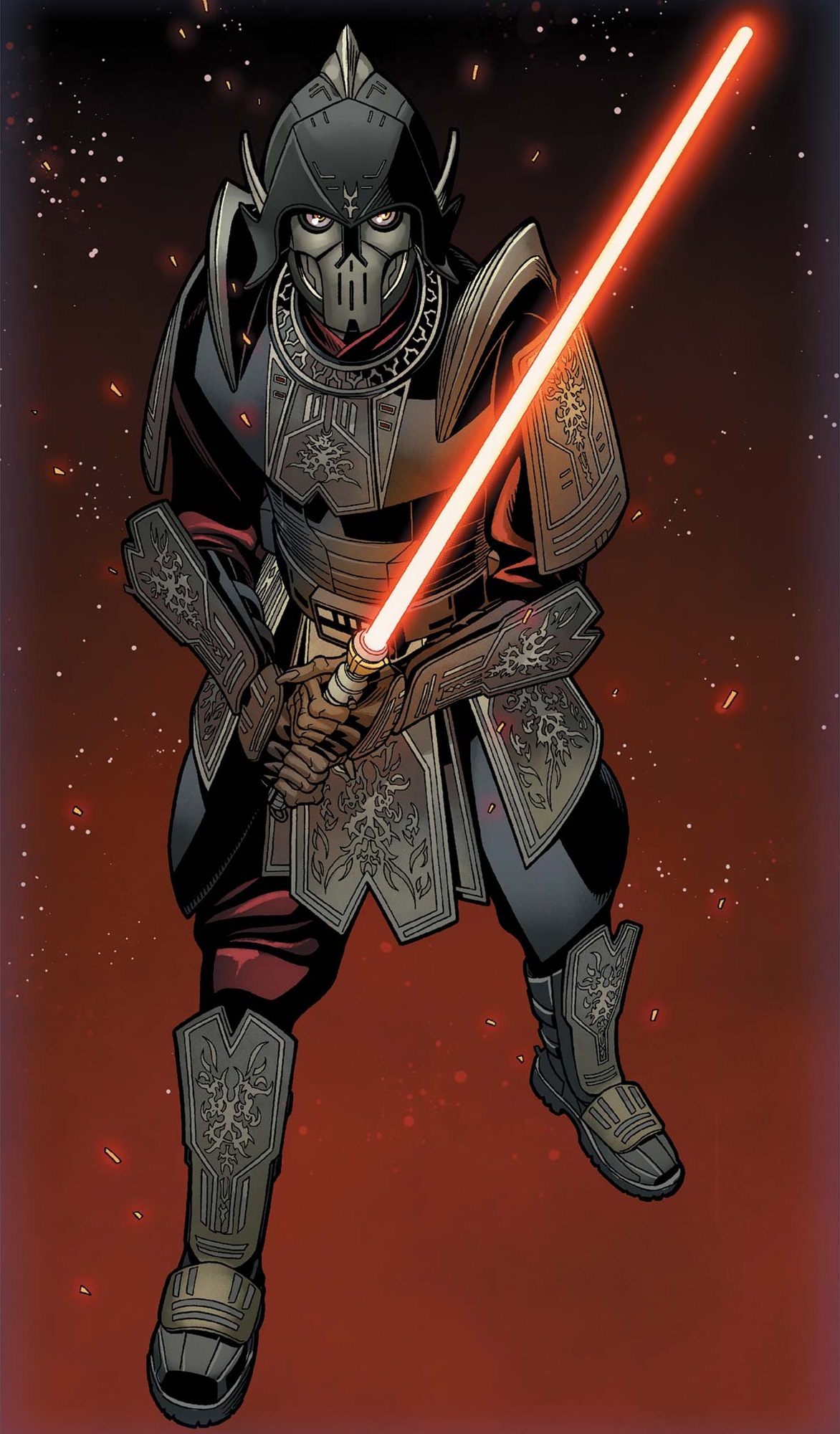
Besides his intellectual mind, Darth Bane was a formidable warrior.
A visionary Sith Lord, Darth Bane was a human male who possessed pale skin and yellow eyes. He believed that strength should have dominance over weakness, developing this philosophy after his personal experiences and by studying ancient Sith documents. Having witnessed the destruction of the Sith and realizing the inherent loneliness that arose from serving the dark side, Bane saw that their infighting and greed had led to their downfall. To preserve the Sith as its last survivor, Bane adopted the Rule of Two, believing that limiting the number of Sith to one Master and one apprentice would allow the Sith to survive in secret so they could plot their revenge against the Jedi. Like his descendants, Bane inspired fear in the hearts of other beings.
As a former member of the Brotherhood of Darkness and the founder of the Rule of Two, Darth Bane was recognized in history for his military tactics and leadership skills. A Sith warrior renowned for his skills in lightsaber combat and the use of intimidation, Bane was an agile, strong, and skilled fighter. While he was a powerful Force wielder and possessed high intelligence, Bane lacked diplomatic skills.

Darth Bane's single-bladed lightsaber
Darth Bane wore ancient Sith armor in the colors of blue, gray, and red, which featured gold etching on it and covered most of his body. Weapons in the Sith Lord's arsenal included a red-bladed lightsaber and a lightsaber pike featuring a fiery-orange blade. Bane additionally owned a T-class long-range personal cruiser named the Valcyn, which was also used by other Sith Lords.
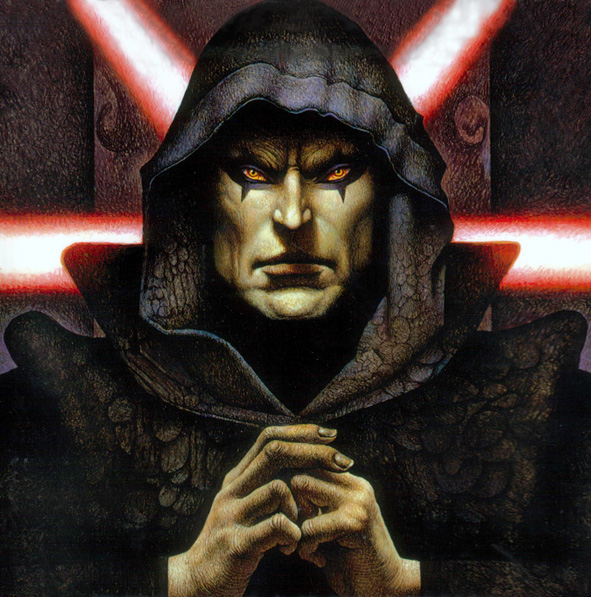
The story of Darth Bane was explored at length in Star Wars Legends.
Created by George Lucas as part of the backstory for the Star Wars prequel trilogy, Darth Bane was first mentioned within the Star Wars Legends continuity in the novelization of , written by Terry Brooks and published in 1999. The character later made his debut in the short story "Bane of the Sith" by Kevin J. Anderson, published in the Star Wars Gamer magazine's third issue on April 17, 2001, and Bane's story was then expanded upon in a number of Legends stories, including a novel trilogy authored by Drew Karpyshyn that focuses on the character as the protagonist.
While the French version of the 2017 reference book Star Wars: Geektionary: The Galaxy from A - Z establishes that Bane hailed from Apatros, which was the case in the Star Wars Legends storytelling, Star Wars: The Clone Wars: Character Encyclopedia - Join the Battle! and Star Wars The Dark Side Pocket Expert — sourcebooks that were published in 2021 and 2023, respectively — list Moraband as the Sith Lord's homeworld. This article assumes Star Wars: Geektionary is incorrect.
During the writing of "Ghosts of Mortis," the seventeenth episode in the third season of the Star Wars: The Clone Wars animated series, Lucas wanted to include two ancient Sith Lords who could serve as an "uber evil influence guiding the Son," the villain of the episode. The production team decided that Darth Bane and Darth Revan, the main character of the Legends video game Star Wars: Knights of the Old Republic, would be the two Sith Lords.
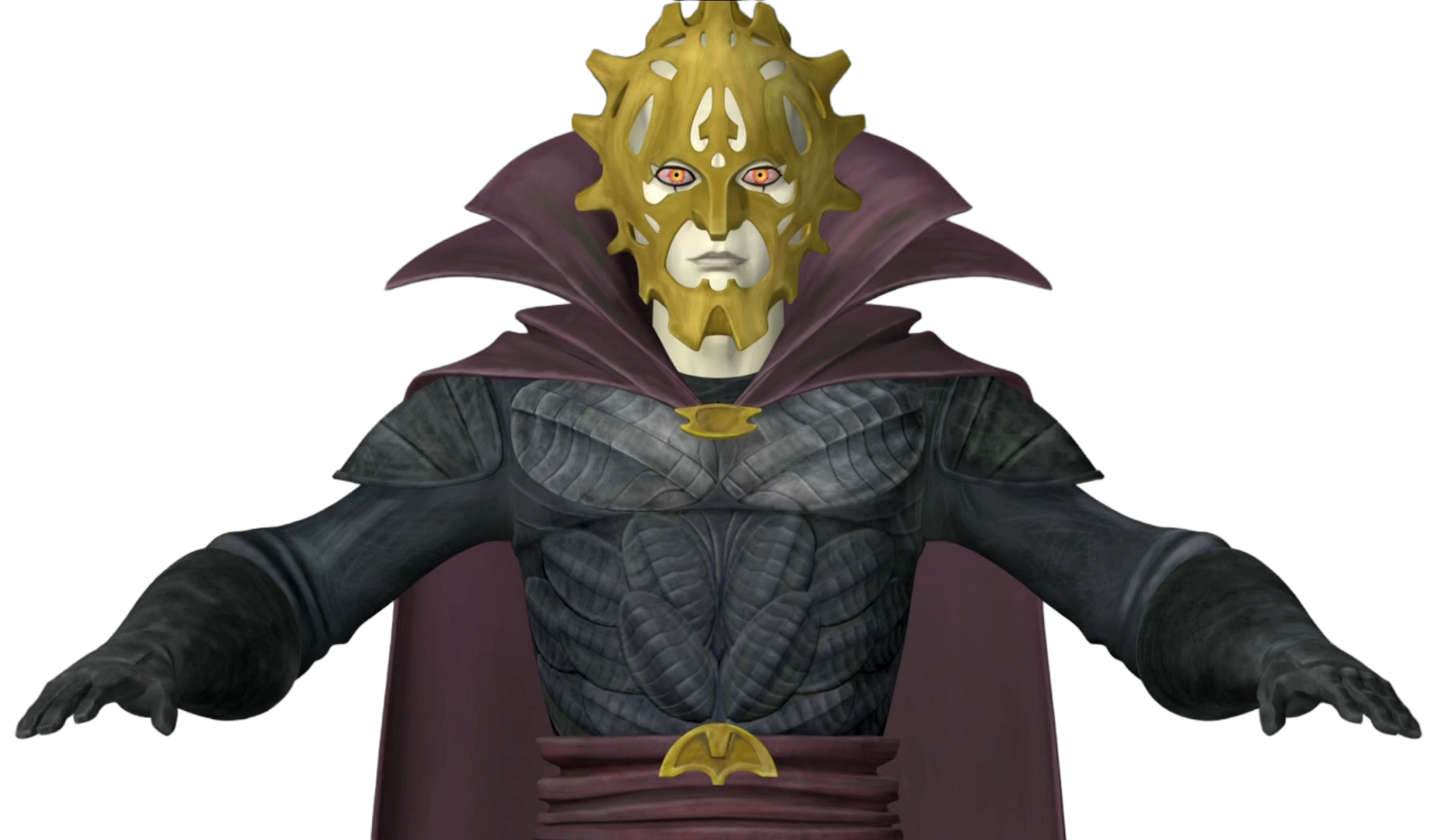
Darth Bane was nearly depicted in the Star Wars: The Clone Wars episode "Ghosts of Mortis," based on his Legends appearance.
The two characters were styled and modeled for "Ghosts of Mortis" based on their appearances in Star Wars Legends, but the scene, despite being laid out, was never animated. Dave Filoni, the series' supervising director, was apprehensive of the idea that Sith Lords could return as spirits, believing that Bane and Revan's appearance would have greater implications than the episode was exploring. Lucas thought about it as well and eventually agreed that the scene should be removed from the episode due to those implications on his ideas about the Force.
The unrealized scene, titled "Son Confers with Ancient Sith Lords" and released in an uncompleted form in the Jedi Temple Archives feature for Star Wars: The Clone Wars The Complete Season Three, depicts Bane and Revan speaking to the Son in the Well of the Dark Side located in the ethereal realm of Mortis. The Son, who has been guided by the two Sith Lords in the past, questions why he feels pain over the events of the two previous episodes, "Overlords" and "Altar of Mortis," and the Sith Lords tell him it is because he has not embraced his pain and resentment. When the Son demands to know their true identities, the two spirits reveal themselves as Bane and Revan and tell him that controlling Anakin Skywalker, the Chosen One, is the key to controlling the galaxy.
Despite being cut from "Ghosts of Mortis," Darth Bane would eventually make his first canonical appearance, albeit as a specter, in "Sacrifice," the thirteenth and final episode in the sixth season of Star Wars: The Clone Wars, which first aired on March 7, 2014. Cutting the previously planned appearance allowed the series' team to redesign the character and define what Bane would look like in the new Star Wars canon. The production team wanted Bane's outfit to resemble ancient warrior armor while still featuring futuristic, high-tech elements.
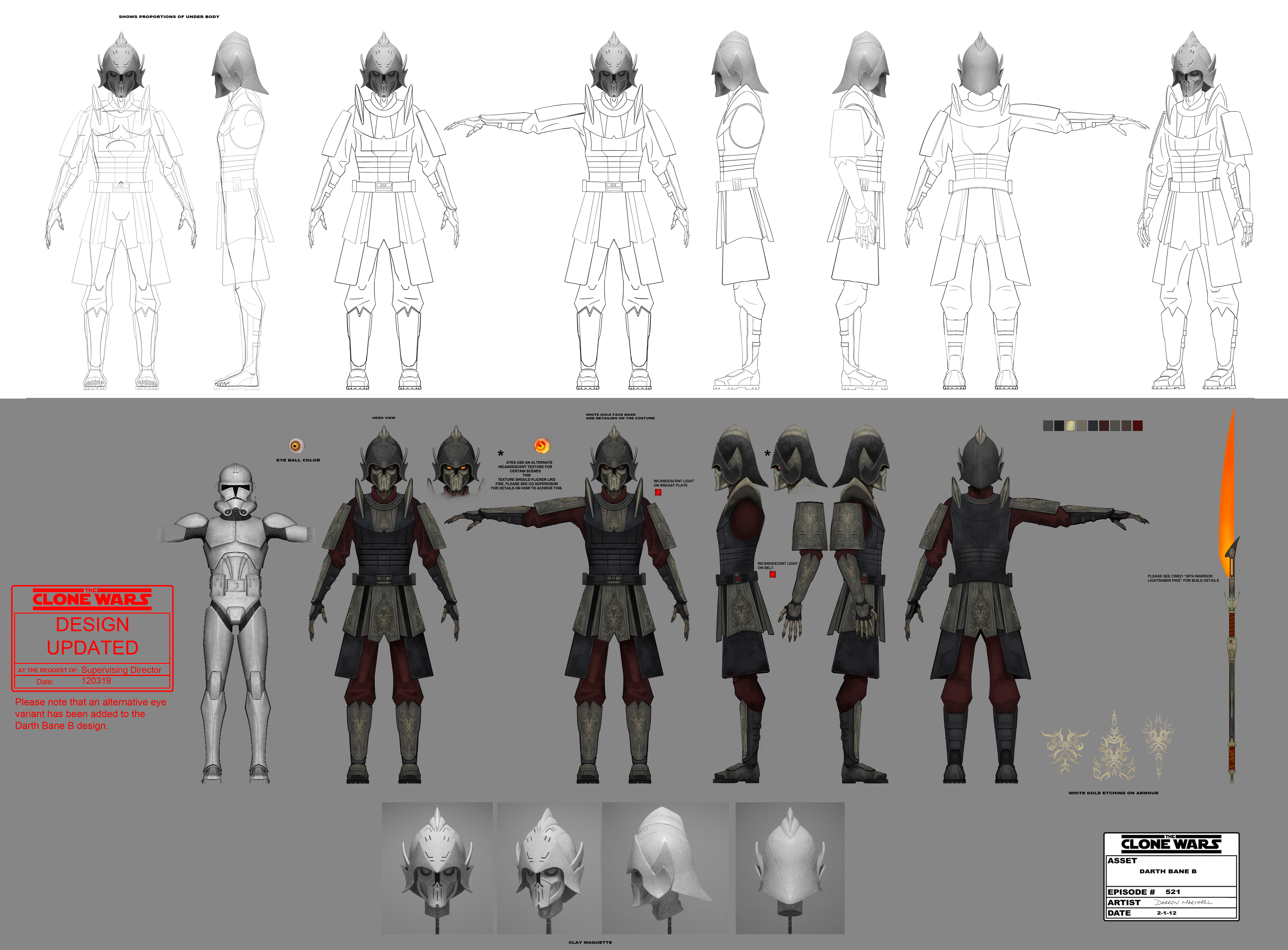
Character concept of Darth Bane, as seen in The Clone Wars episode "Sacrifice"
The concept design for Bane, created by Darren Marshall, included a full armor suit that was influenced by both samurai armor, which also inspired the design of Darth Vader's suit, as well as ancient Chinese medieval armor. Although not being featured in the episode itself, the concept art for "Sacrifice" contained a "Sith warrior lightsaber pike" designed by David Le Merrer, which later appeared in the 2021 reference book Star Wars: The Secrets of the Sith. Additionally, according to Lucasfilm Story Group member Pablo Hidalgo, Bane's specter was conjured by the Force Priestesses in the episode.
Bane's specter was voiced by Mark Hamill, best known for his portrayal of Luke Skywalker in the Star Wars saga. To create Bane's voice as heard in the episode, Dave Filoni recorded Hamill reading his lines using two different inflections, and then sound designers Matthew Wood and David Acord layered the recordings on top of one another. Prior to taking on the role of Bane, Hamill did not know of the character or how Bane fit into the overall arc of Star Wars. His son Nathan Hamill knew about the history of the character and was able to explain it to his father once he took on the role.
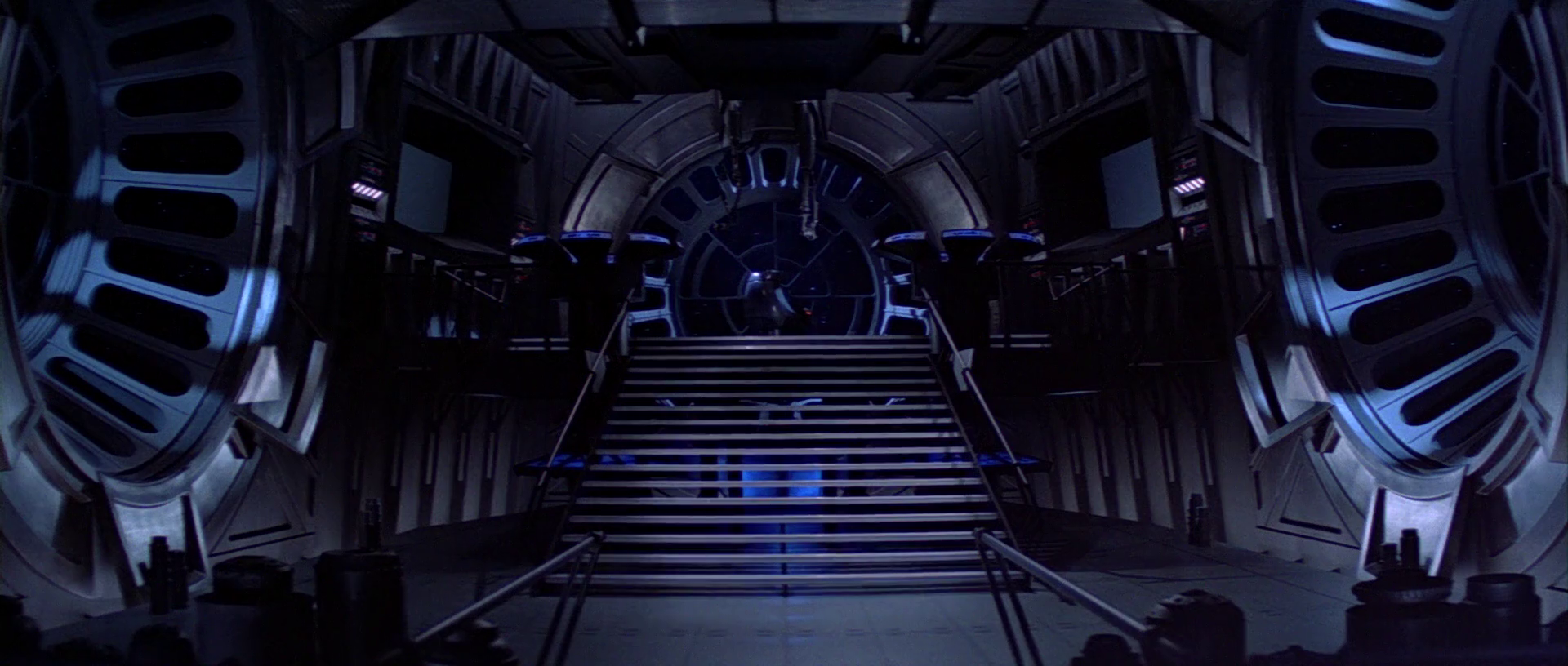
According to The Odyssey of Star Wars: An Epic Poem, Darth Sidious kept a statue of Bane in his throne room aboard the Death Star II.
The 2017 children's activity book Star Wars: The Doodles Strike Back illustrates a second confrontation between Darth Bane and Yoda. Suggesting that the Jedi Master could not defeat Bane alone this time, the book asks reader to draw "some Jedi friends" to help him. Darth Bane was also included in Fantasy Flight Games' Star Wars: Destiny collectible dice and card game via the 2020 booster pack, Covert Missions. According to Martin de Diego Sádaba, who illustrated the card "Darth Bane—Ancient Master" for the pack, his illustration depicts Bane "keeping the gate to a forgotten Sith temple."
The Odyssey of Star Wars: An Epic Poem, a 2021 book that retells the events of Rogue One: A Star Wars Story and the original trilogy in the style of Homeric epic poetry, depicts an alternate version of the scene where Vader speaks to the Emperor via hologram in . In the epic poem, the Emperor tells Vader to recall how Bane restored the Sith Order from ruin and instituted the Rule of Two, and unlike the film, the conversation occurs before the Empire discovers the rebel base on the planet Hoth. The Odyssey of Star Wars also establishes that Sidious kept twin statues of Darth Bane and the nameless founder of the Sith Order in his throne room aboard the second Death Star battle station. Both statues were made out of the hardest crystal, with Bane's statue representing him in his iron armor. According to the book's author, Jack Mitchell, these statues are used as ekphrastic devices, a way of giving background embedded in the narrative, and not to be necessarily considered as canonical facts.